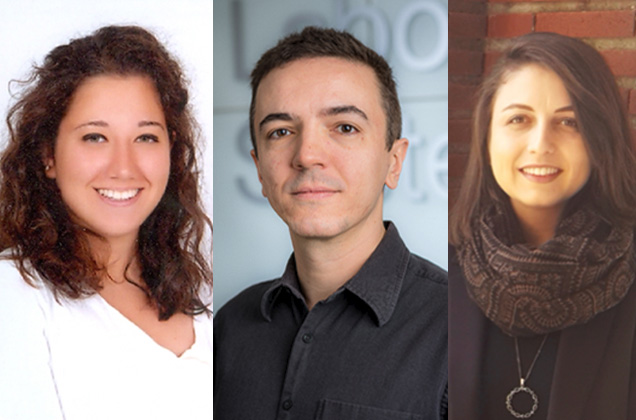14/11/2017
New antibiotic combinations for tuberculosis treatment were discovered in a joint project between Sabancı University and Harvard University. The study also devised a novel method for finding drug combinations with more than two drugs.

Left to right: Ece Bıçak, Murat Çokol, Nurdan Kuru
A study for discovering new antibiotic combinations that was initiated in Sabancı University by Associate Professor Murat Çokol was completed in the Harvard University Laboratory of Systems Pharmacology. Also involved in the study are Sabancı University Faculty of Engineering and Natural Sciences Molecular Biology, Genetics and Bioengineering 2016 bachelor's graduate and Brandeis University Biotechnology Program master's student Ece Bıçak, and Industrial Engineering PhD candidate Nurdan Kuru.
The method uses principles of analytical geometry and pharmacology to identify two-, three- and four-drug synergistic drug combinations to be used for tuberculosis treatment.
Although the antibiotics on their own have well-documented efficacy, this is the first time the antibiotic combinations are shown to have synergy.
The joint use of two or more drugs is common for the treatment of many diseases including tuberculosis, cancer and AIDS. This study allows researchers to assay the synergistic effects of multi-drug combinations (containing more than two drugs) at a very low cost, which will enable more widespread use of such drugs in medicine. As an example, testing for the synergy of a five-drug combination costs less than 0.1% of the cost of a conventional test.
Murat Çokol said the following: "Using known antibiotics in a multi-synergistic combination is one of our best strengths against antibiotic resistance. But the number of possible combinations is astronomical; just 20 drugs have more than 15,000 combinations of five. The method we developed helps us find the most effective combinations among the plethora of possibilities."
The project initiated by Murat Çokol at Sabancı University was published in Science Advances in October and was covered by the news sections of Harvard Medical School and Tufts University websites.





